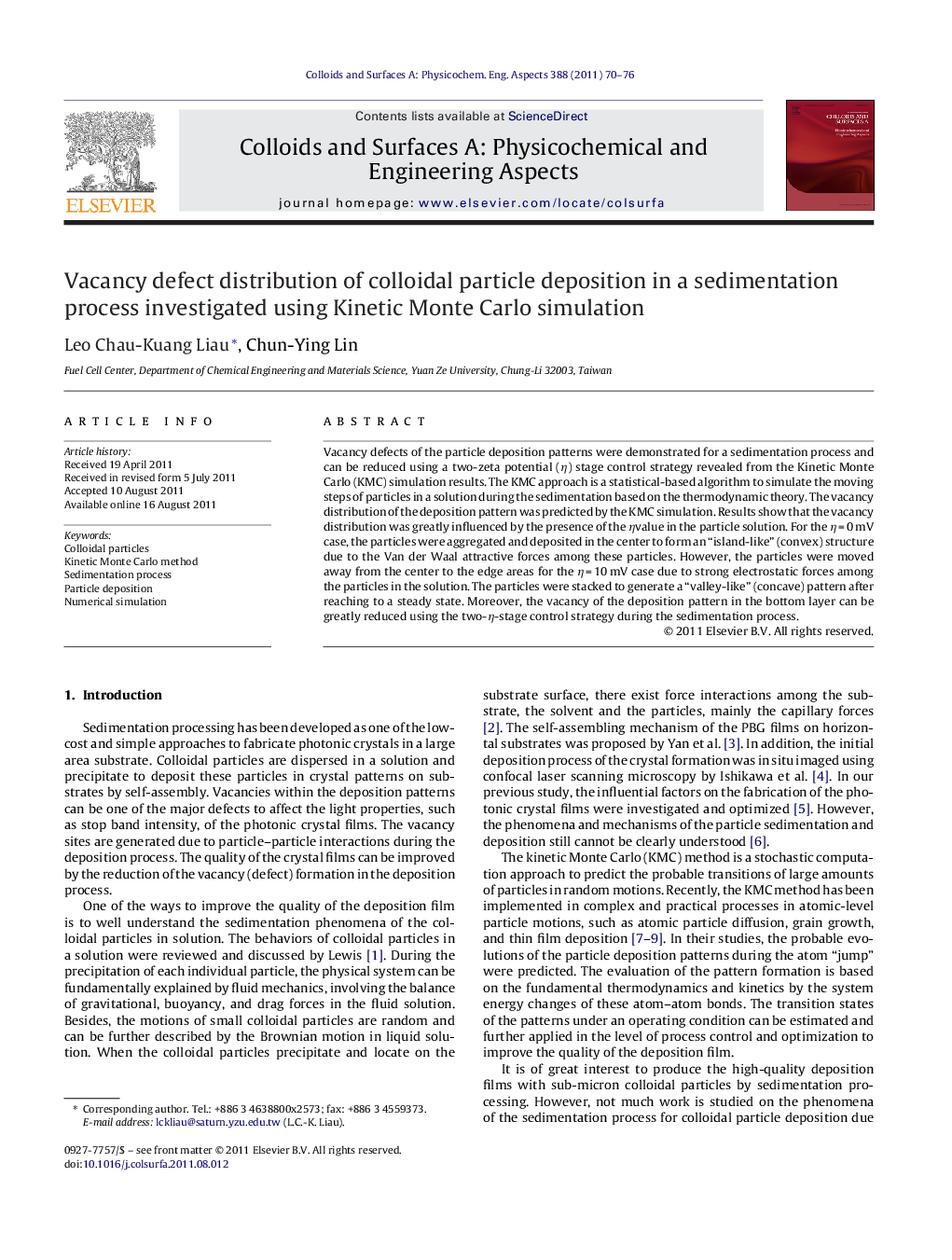| کد مقاله | کد نشریه | سال انتشار | مقاله انگلیسی | نسخه تمام متن |
|---|---|---|---|---|
| 594740 | 1453984 | 2011 | 7 صفحه PDF | دانلود رایگان |

Vacancy defects of the particle deposition patterns were demonstrated for a sedimentation process and can be reduced using a two-zeta potential (η) stage control strategy revealed from the Kinetic Monte Carlo (KMC) simulation results. The KMC approach is a statistical-based algorithm to simulate the moving steps of particles in a solution during the sedimentation based on the thermodynamic theory. The vacancy distribution of the deposition pattern was predicted by the KMC simulation. Results show that the vacancy distribution was greatly influenced by the presence of the ηvalue in the particle solution. For the η = 0 mV case, the particles were aggregated and deposited in the center to form an “island-like” (convex) structure due to the Van der Waal attractive forces among these particles. However, the particles were moved away from the center to the edge areas for the η = 10 mV case due to strong electrostatic forces among the particles in the solution. The particles were stacked to generate a “valley-like” (concave) pattern after reaching to a steady state. Moreover, the vacancy of the deposition pattern in the bottom layer can be greatly reduced using the two-η-stage control strategy during the sedimentation process.
No vacancy site in the bottom layer of the deposition pattern using the two-η-stage control strategy.Figure optionsDownload as PowerPoint slideHighlights
► Vacancy defects of the particle deposition patterns were demonstrated using the Kinetic Monte Carlo (KMC) simulation.
► Vacancy distribution was greatly influenced by the presence of the zeta-potential (η) in the particle solution.
► Colloidal particles were aggregated and deposited to form an “island-like” (convex) structure for the η = 0 mV case.
► Colloidal particles were stacked to generate a “valley-like” (concave) pattern for the η = 10 mV case.
► No vacancy in the bottom layer of the deposition pattern was predicted using the two-η-stage control strategy.
Journal: Colloids and Surfaces A: Physicochemical and Engineering Aspects - Volume 388, Issues 1–3, 5 September 2011, Pages 70–76